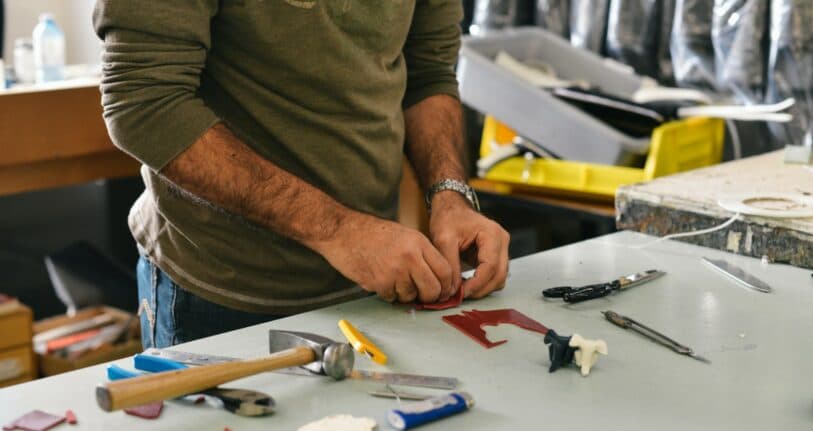5 Steps To Trade Mark A Game

Designing a game is an exciting but daunting process. Creating a game from scratch requires a lot of hard work and creativity, so you should protect your original creation. One of the best ways to protect your game is through trade mark registration. This article will take you through five steps to trade mark a game to help with this process.
1. Choose Your Trade Mark
The first step to trade mark your game is to choose a trade mark. A trade mark can take many forms. For a board game, this might include your game name, slogan, logo, or packaging. You can also trade mark the images and texts used in your game. If your game is a video game, you might want to trade mark your business name or logo.
Once you have chosen your trade mark, you will need to ensure that it is available for use. This includes checking that nobody else is using your trade mark. You can check if your trade mark is available by conducting a thorough search using the ATMOSS free trade mark search tool.
2. Choose Your Goods or Services Classes
When applying to register a trade mark for your game, you will need to choose a class of goods or services. These classes are categories of different products and services. The trade mark class you register your trade mark under is important because IP Australia will only protect your trade mark under that class.
There are 45 classes you can choose from, divided into 34 goods and 11 services. For example, trade mark class nine includes ‘computer software’, which might be relevant to certain computer games. On the other hand, trade mark class 28 is for ‘games and playthings’, which is relevant for board games. You can browse the trade mark class options here.
3. Consider Other Protection
As well as registering a trade mark, you should consider your other intellectual property (IP) options. While a trade mark can protect the name of your game and elements of your branding, there may be other elements of your game that you may wish to protect.
For example, a patent may be a good option for a game because it can protect the actual mechanics of your game and the overall concept. However, the standard to obtain a patent is high, and your game will need to be sufficiently original to secure a patent.
Copyright is another great way to protect your game. Once your game is in material form, either as a board game or code for a computer game, you will be granted certain rights over it. There is no registration system for copyright in Australia. Instead, you will receive copyright automatically.
4. Apply For Your Trade Mark
Once you have chosen your trade mark and determined that it is available for use, you will be able to submit a trade mark application. Your application will require you to submit:
- your contact details;
- a visual representation of your trade mark;
- a description of your game; and
- your chosen goods and services class.
You will also be required to pay a filing fee with your application.
If your trade mark meets all of IP Australia’s trade mark requirements, you will be able to register your trade mark and have your trade mark placed on the trade mark register. However, IP Australia may have issues with your trade mark. In that case, you will receive an adverse examination report outlining any issues with your application, which you will be able to amend. There will also be an opportunity for third parties to dispute your trade mark if they believe your trade mark will infringe on theirs.
5. Monitor Your Trade Mark
Once your trade mark has been approved and placed on the trade mark register, you will have protection for 10 years. Before this 10 year period is up, you will need to renew your trade mark.
As well as renewing your trade mark, you must continue to monitor your trade mark. This includes making sure you use your trade mark and regularly checking that nobody has infringed on your trade mark. Your trade mark gives you rights to prevent others from using your trade mark, so you must enforce these rights.
Key Takeaways
Trade marking your game is an exciting part of establishing it as a brand and solidifying its identity in the market. Some steps to trade mark your game include:
- choosing your trade mark;
- selecting your goods and services classes;
- considering all your IP protection options;
- submitting a trade mark application; and
- monitoring your trade mark.
Trade mark registration can be a complex process. If you need help protecting your game, get in touch with our experienced trade mark lawyers. You can contact them on 1300 657 423 or by filling out the form on this page.
Frequently Asked Questions
There are several steps that you will need to take to trade mark your game. This includes choosing what you will trade mark, selecting your goods and services classes, submitting your trade mark application, and monitoring your trade mark. You should also consider other IP protection options that will complement your trade mark.
A trade mark can take many forms. For your game, this may include the name and slogan of your game. If your game is a board game, you may wish to trade mark the packaging, the text and visual elements used in your board game.
A trade mark is an excellent way to protect certain elements of your game, help you establish a brand and develop a consumer base. Obtaining trade mark registration provides an extra layer of protection over your game, giving you rights to enforce others who are using your trade mark without your permission.

